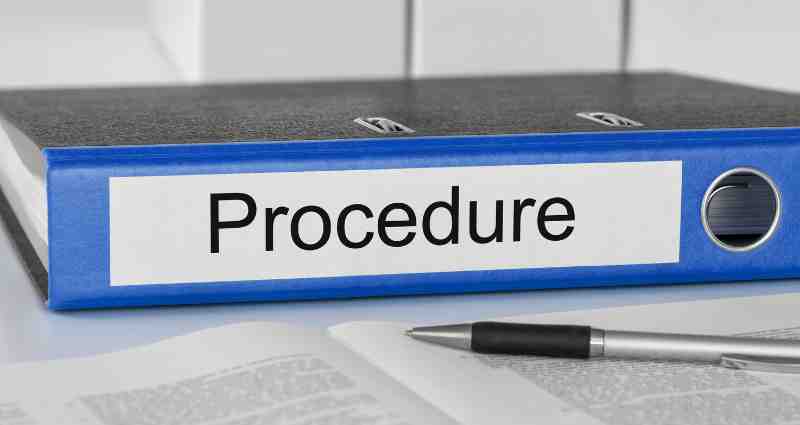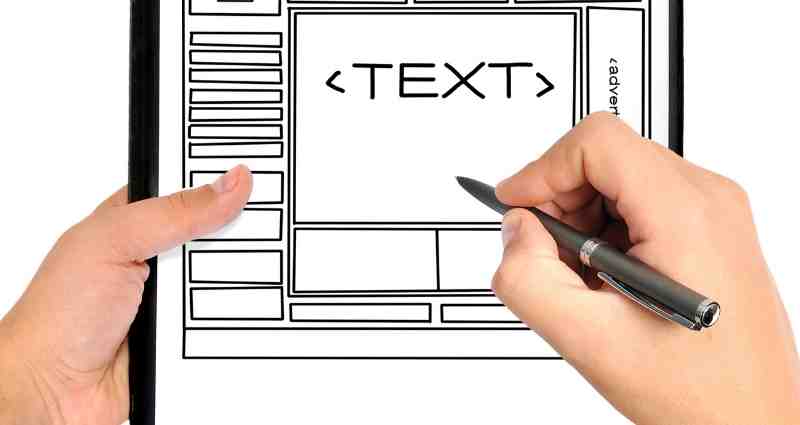“AI can’t do much unless you have good documented processes,” said Tiago Forte, author of Building a Second Brain.
We couldn’t agree more. Whether you want to create a budget, forecast demand, design fuel-efficient routes, optimize crew schedules, or catch invoice errors, your AI needs clear standard operating procedures (SOPs) to follow. The more detailed and nuanced your process documentation, the more accurate your AI results.
Creating SOPs used to take days of manual work. Not anymore. This article shows you seven quick ways to build effective SOPs using AI.
Why Your Small Business Needs SOPs

According to Indeed.com “A standard operating procedure (SOP) is a document that details the set of activities necessary to complete a task. An SOP outlines the step-by-step instructions for executing a task to streamline a process in accordance with provincial laws or legal guidelines, industry regulations, or the organization’s set standards.”
SOPs are the most overlooked aspect of small business operations. When you’re a solo founder or running a tiny team, who has time to document workflows?
Before we dive into AI use, let’s review the key benefits of SOPs for solopreneurs and tiny teams.
Optimizes and Clarifies Processes
“If you can’t describe what you are doing as a process, you don’t know what you’re doing.” W. Edwards Deming.
Writing both technical and non-technical documentation brings clarity to complex work. The very act of documenting workflows forces us to think through each step deliberately, exposing the logic, and sometimes the flaws, behind how tasks are performed.
This reflection often reveals opportunities for improvement, eliminates inefficiencies, and highlights gaps that might otherwise go unnoticed.
Enables Delegation
As small business owners and solopreneurs, we increasingly delegate work to contractors and now to AI. This makes SOPs an essential tool.
SOPs ensure your business runs smoothly even when you’re on vacation. They act as a reliable backup plan, enabling someone else to step in and handle critical tasks, such as invoicing, to keep cash flowing.
Beyond continuity, SOPs supports consistent execution of tasks, delivering uniform performance and quality. This consistency helps to build brand loyalty and establish client trust.
Reduces Errors and Missed Steps
Following an SOP prevents common mistakes, such as forgetting crucial details before hitting send on an email.
By documenting processes, small business owners reduce the mental load of remembering every detail, freeing up mental bandwidth for creative work and focusing energy on tasks that matter.
SOPs also support compliance with industry regulations, especially in areas like record-keeping and tax filings.
Last, but not least, documented SOPs increase the business value if the owner decides to sell it.
Why SOW Templates Matter

Even before the widespread use of AI, template provided significant business benefits for the following reasons:
Readability
Templates improve readability and clarity of documentation because they provide a unified look and feel. This standardized format and structure allows readers to find information more quickly and easily, while supporting consistency in branding, including logos, colors, and fonts.
Time-savings
Templates offer substantial time savings because creating documents from scratch requires significant effort. By offering pre-designed layouts, styles, and sections, templates allow us to focus immediately on adding relevant content.
Accuracy
Templates enhance accuracy and completeness of documentation by reducing the chance of human error. They prevent common oversights, such as forgetting necessary supporting elements, revision tables or legal disclaimers.
In the AI world, the importance of documentation templates increased:
Revision Control
First, consistent structure makes it easier for AI to keep templates up to date. When your information follows a standardized format, AI can quickly identify which sections need refreshing, update sections automatically, and maintain version control with minimal human input.
Higher Quality Results
Second, it’s easier for AI to follow instructions on templates rather than a random collection of notes. A well-defined template acts as a structured prompt, providing clear parameters and context, which improves the AI’s ability to interpret and execute tasks accurately, leading to more reliable results.
Error Reduction
Third, templates reduce AI hallucinations and errors. By constraining AI within predefined fields and sections, you minimize the risk of fabricated information or off-topic content.
Scalability
Finally, templates enable scalability. You can task AI with generating or updating multiple SOPs simultaneously, knowing each will maintain your brand voice, formatting standards, and quality benchmarks.
Seven Ways to Use AI to Create SOWs

There are many ways to use AI for creating SOWs. In this section, we focus on seven quick wins that deliver the fastest and most impactful business results.
1. Narrate Your Processes Over
You can create the first draft of your SOP by simply narrating it over a video, transcribing a meeting, recording a meeting, or using voice notes to capture your process in real time.
Once you have the spoken or recorded version, you can convert it into text using transcription tools (like Otter, Loom, or ChatGPT’s record mode) and then refine it into a structured SOP. To make it even easier, you can upload a video or audio file to your AI chatbot with a request to create SOP.
Example
You’ve hired a contractor on Upwork to build your website. During a virtual training session, they walk you through key tasks explaining how to use the media library, create a new blog post, and optimize pages for SEO.
Instead of just taking notes, record and transcribe the session. Afterward, upload the transcript to AI with a prompt: “Convert this onboarding training session into a step-by-step Website Content Management Standard Operating Procedure (SOP).”
The AI will extract clear process steps and create the first draft of an SOP for you. Review the draft, share it with your contractor for feedback, and add screenshots where necessary.
This method shines because it preserves conversational knowledge transfer, including the reasoning and best practices (“the why”) behind each action.
Next time you or a teammate needs to publish a blog post or optimize web pages for SEO, you’ll have a structured, easy-to-follow, and reusable SOP ready to go.
2. Summarize Existing Process Artifacts
Most small business owners and solopreneurs have scattered information about their processes in forms of statistics, emails, chat threads, task notes, and other artifacts.
AI can pull all these fragments together to build a clear, step-by-step SOW.
Example
Let’s say you manage several virtual assistants who handle data cleaning for your business. Over time, you’ve exchanged emails about data cleaning errors, shared screenshots of formatting problems, and kept spreadsheets showing before-and-after results.
Instead of manually writing a new SOP, you can upload all these materials into your AI workspace, including past task examples, chat feedback, email corrections, and reference sheets. Then, prompt: “Analyze these files and create a detailed SOP for our data cleaning process. Include step-by-step instructions, quality standards, common errors, and communication checkpoints.“
The AI reviews the correspondence to identify recurring issues, best practices, and workflow patterns, then drafts an SOP for you.
3. Identify Patterns in What Works Best
In an early interview with Corbett Barr, James Clear shared how he became a full-time blogger in just six months: “Once you find something that works, double down on it.”
Paul, former CTO of the Huffington Post, echoes the same mindset: “We measure everything, try a ton of stuff, pull out the stuff that works, and then take it even further.”
Indeed, this is how small businesses success: by trying a lot of things and amplifying what works. AI is a fantastic help in this journey. AI can help you spot patterns and turn scattered wins into repeatable systems.
Examples
As a small business owner, you can collect your “wins” in many areas including successful sales pitches, high-performing outreach emails, winning responses to RFPs or top-performing social posts or ads.
For example, a small business owner who frequently responds to RFPs (Requests for Proposals) can streamline success by building a “Projects” folder in ChatGPT. Each time they win an RFP, they upload the full proposal, client brief, and key correspondence. Over time, this folder becomes a library of winning examples.
Using AI, the business owner can ask: “Analyze these winning RFPs and create a Standard Operating Procedure (SOP) for how we craft proposals.”
The resulting SOP will outline best practices, templates, and response strategies.
When a new RFP arrives, the owner uploads it and prompts: “Use our RFP SOP to draft a proposal for this opportunity.” In minutes, AI generates a tailored first draft that follows proven blueprint for success.
4. Reverse-Engineer Your “Lucky Strikes”
AI isn’t just great at summarizing small wins, like successful RFP responses or high-performing social posts.
AI can also reverse-engineer major breakthroughs that might feel like “pure luck.”
Example
Let’s say, as a small business owner, you just landed a massive client or closed your biggest sale.
Use AI right away to gather everything connected to that success. Tracing the full journey. Narrate how you first discovered the client, how you approached them, and what steps led to the deal. Collect every email, meeting note, and proposals. Map out the timeline: when you met, what you discussed, when you followed up, and how you communicated.
Don’t skip a single detail. In major wins, there’s no such thing as an unimportant moment.
Next, upload all this material to your Projects folder in ChatGPT (or your AI workspace). Then prompt: “Analyze these materials and identify what contributed most to this win. Create a step-by-step SOP for replicating it.”
Once the SOP is drafted, review and refine it, adding screenshots or templates where needed.
The next time an opportunity arises, execute a proven formula for success. Then review what worked, refine what didn’t, and improve your playbook.
5. Align with Regulations and Standards
Another great use of AI in drafting SOWs is benchmarking against industry standards.
There are several ways to approach this. You can upload your SOP template, process workflows, reference materials, and industry standards together, then ask your AI tool to synthesize them into an SOP.
Alternatively, you can draft your SOP first, or use an existing one, and then ask AI to benchmark it against industry standards, highlighting gaps and suggesting improvements.
Example
As a small business owner, you’ve started using AI to streamline your consulting workflow , conducting competitor research, analyzing client data, and drafting proposals. Your goal is to ensure that AI is used safely, fairly, and responsibly.
You begin by identifying your local privacy, security, and AI governance regulations. To understand potential risks, you refer to the NIST AI Risk Management Framework. You then upload these materials, along with your company’s existing policies and process notes, into relevant Projects folder in ChatGPT (or your AI workspace).
Next, you prompt: “Review these materials and help align my AI use with privacy, fairness, and transparency standards. Use NIST to highlight AI risks relevant to my operations and suggest strategies to mitigate them.”
As a result, AI generates a draft of Responsible AI Standard Operating Procedure (SOP) tailored to your business.
6. Adapt Existing SOPs into Sister SOWs
You can use AI to create a “sister” SOP on a closely related topic from an existing one.
Start with a well-documented SOP and identify a closely related process that differs only slightly. Provide AI with the original SOP and a document that describes the difference, and ask to create a new SOP.
Example
You take your SOP for processing a domestic sales order and ask AI to create a version for international sales orders, explaining only the key differences such as customs declarations, currency exchange, payment terms, and shipping documentation.
Prompt: “Using this SOP for domestic sales orders as the base, create a new SOP for international sales orders. Keep the same structure, tone, and format. Update or add steps related to international processing, including customs documentation, export compliance checks, international shipping coordination, currency conversion, and revised payment terms. Remove any instructions that apply only to domestic transactions.”
The AI reuses the core framework while weaving in the new details.
7. Reverse-Engineer from Deliverables
You can also start working with AI on your SOP from the end deliverable.
This method involves giving the AI structured output data (like completed forms, checklists, or data templates) and tasking it with inferring the preceding steps necessary to complete that output.
Example
You provide the AI with an equipment inspection form that your technicians currently fill out after each site visit and ask AI to generate a complete, step-by-step SOP for conducting equipment inspections based on that form.
Prompt: “Using this equipment inspection form as the reference, create a detailed SOP for performing standard equipment inspections. Keep the same structure, tone, and level of detail found in our existing SOPs. Include step-by-step procedures for pre-inspection preparation, on-site safety checks, data recording, photo documentation, issue reporting, and final sign-off.”
The AI analyzes the inspection form, identifies key actions and sequences, and draft a new SOP.
Key Takeaways
- Solopreneurs and small businesses need SOPs to optimize workflows, clarify processes, and delegate tasks.
- Start with a template! Templates save time and improve the accuracy, readability, and clarity of your documents.
- There are many ways to use AI to create SOPs: you can narrate the details, reverse-engineer successes and desired deliverables, align your documents with regulatory guidelines, and tweak descriptions to cover new areas.